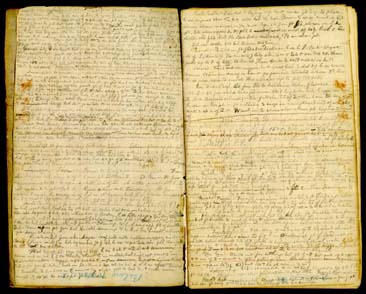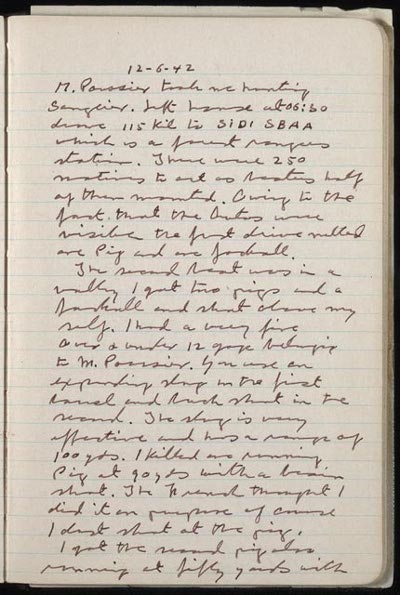I followed a link recently and found this interesting blog post at The Art of Manliness. It explores the ways that twenty famous men used pocket notebooks-perhaps the equivalent of today’s ubiquitous smartphone. The use of such notebooks at one time was very common, according to the post. For the bibliophile, the list looks at how a few well-known authors used theirs, including Mark Twain.
 From the post: “Twain’s first pocket notebooks were purchased in 1857 at the age of 21 during his training to become the “cub†pilot of a steamboat on the Mississippi River. He felt confident that the job would be fairly easy to learn but found he could not remember the instructions his teacher, Horace Bixby, imparted to him. Bixby advised Clemens, “My boy, you must get a little memorandum-book, and every time I tell you a thing, put it down right away. There’s only one way to be a pilot, and that is to get this entire river by heart. You have to know it just like A B C. Clemens accepted Bixby’s advice and thus began a lifelong relationship with the pocket notebook.”
From the post: “Twain’s first pocket notebooks were purchased in 1857 at the age of 21 during his training to become the “cub†pilot of a steamboat on the Mississippi River. He felt confident that the job would be fairly easy to learn but found he could not remember the instructions his teacher, Horace Bixby, imparted to him. Bixby advised Clemens, “My boy, you must get a little memorandum-book, and every time I tell you a thing, put it down right away. There’s only one way to be a pilot, and that is to get this entire river by heart. You have to know it just like A B C. Clemens accepted Bixby’s advice and thus began a lifelong relationship with the pocket notebook.”
Twain kept between 40 and 50 notebooks in his lifetime, often starting a new one before leaving on a trip. They are filled with pithy sentences and unique observations. Check out the rest of the notebooks featured in this post.
 I can’t resist highlighting another notebook from the post. This includes the notebook that General George S. Patton began in 1921, where he began to collect and form his ideas about what made a good soldier and a good leader, including these observations:
I can’t resist highlighting another notebook from the post. This includes the notebook that General George S. Patton began in 1921, where he began to collect and form his ideas about what made a good soldier and a good leader, including these observations:
War means fighting. Fighting means killing, not digging trenches.
Find the enemy, attack him, invade his land, raise hell while you’re at it.
Officers must be made to care for their men. That is the Sole Duty of All Officers.





